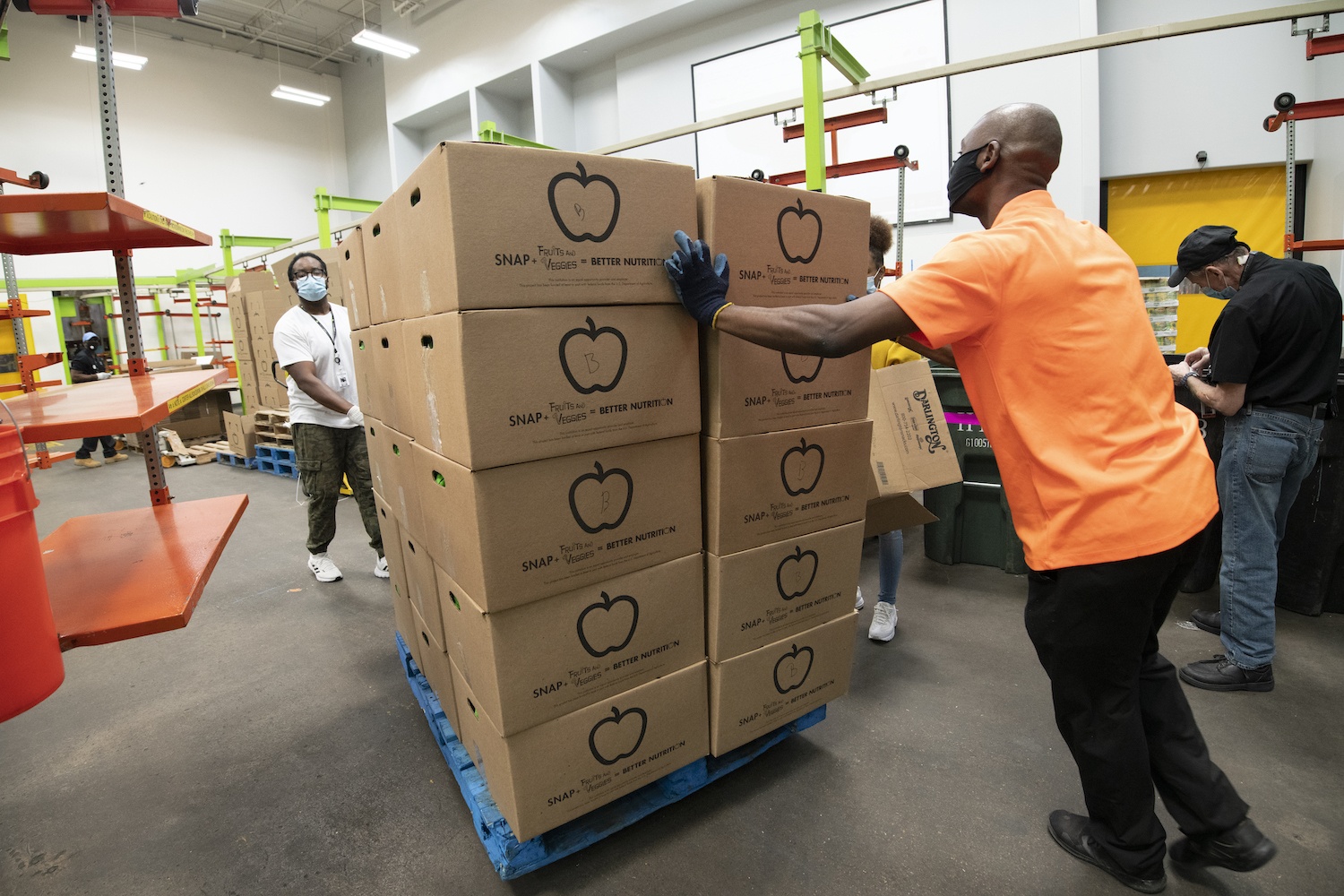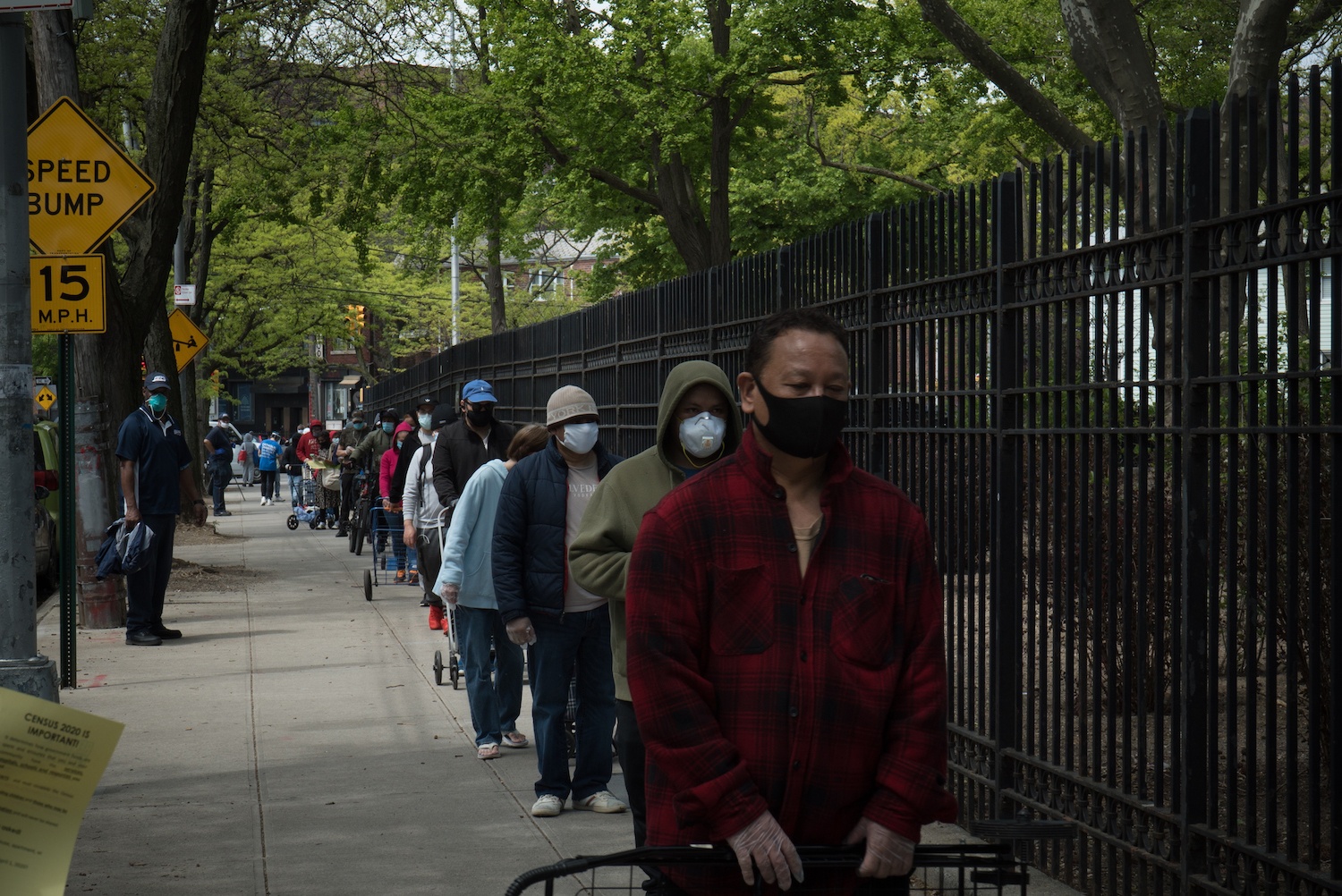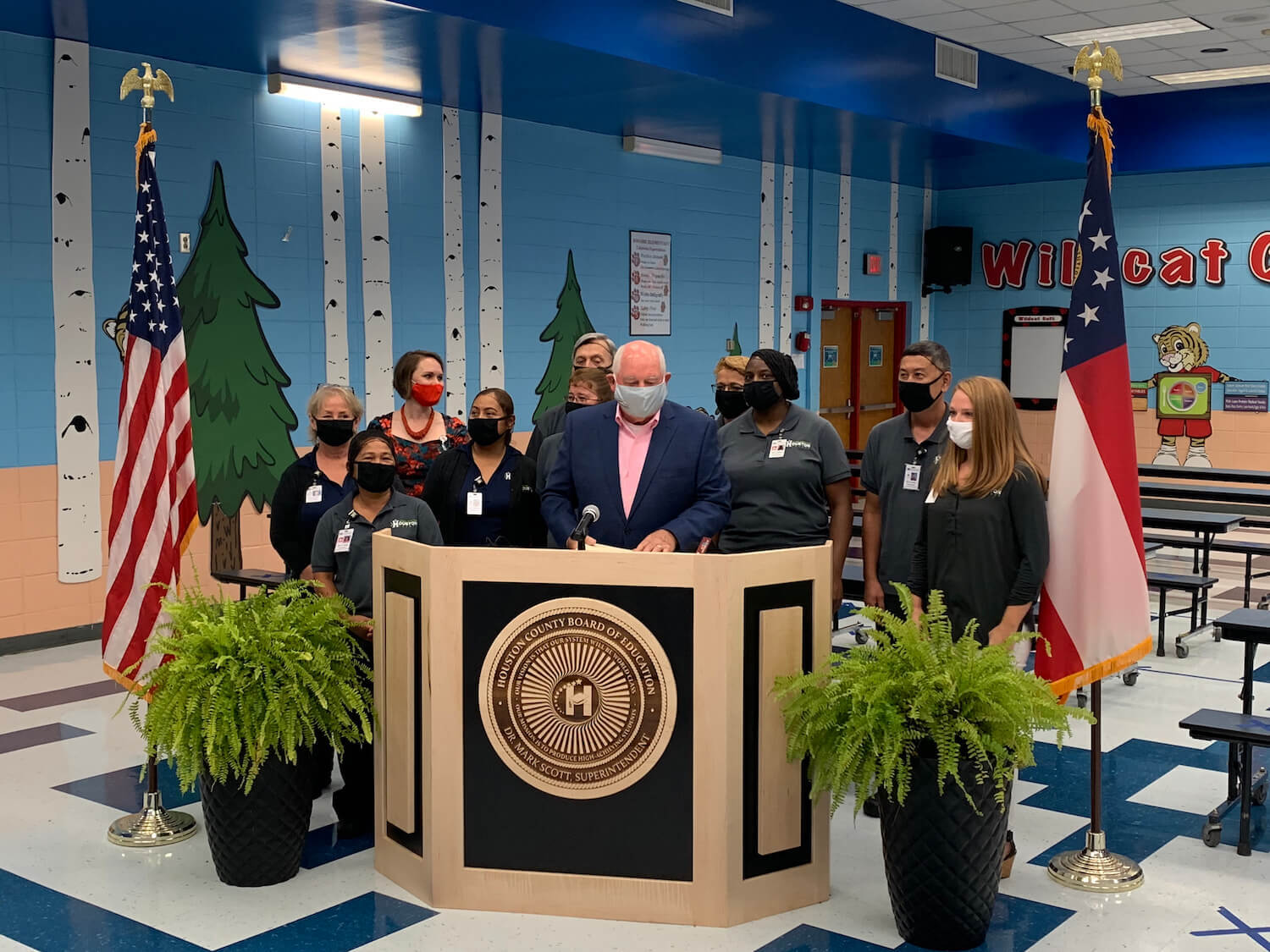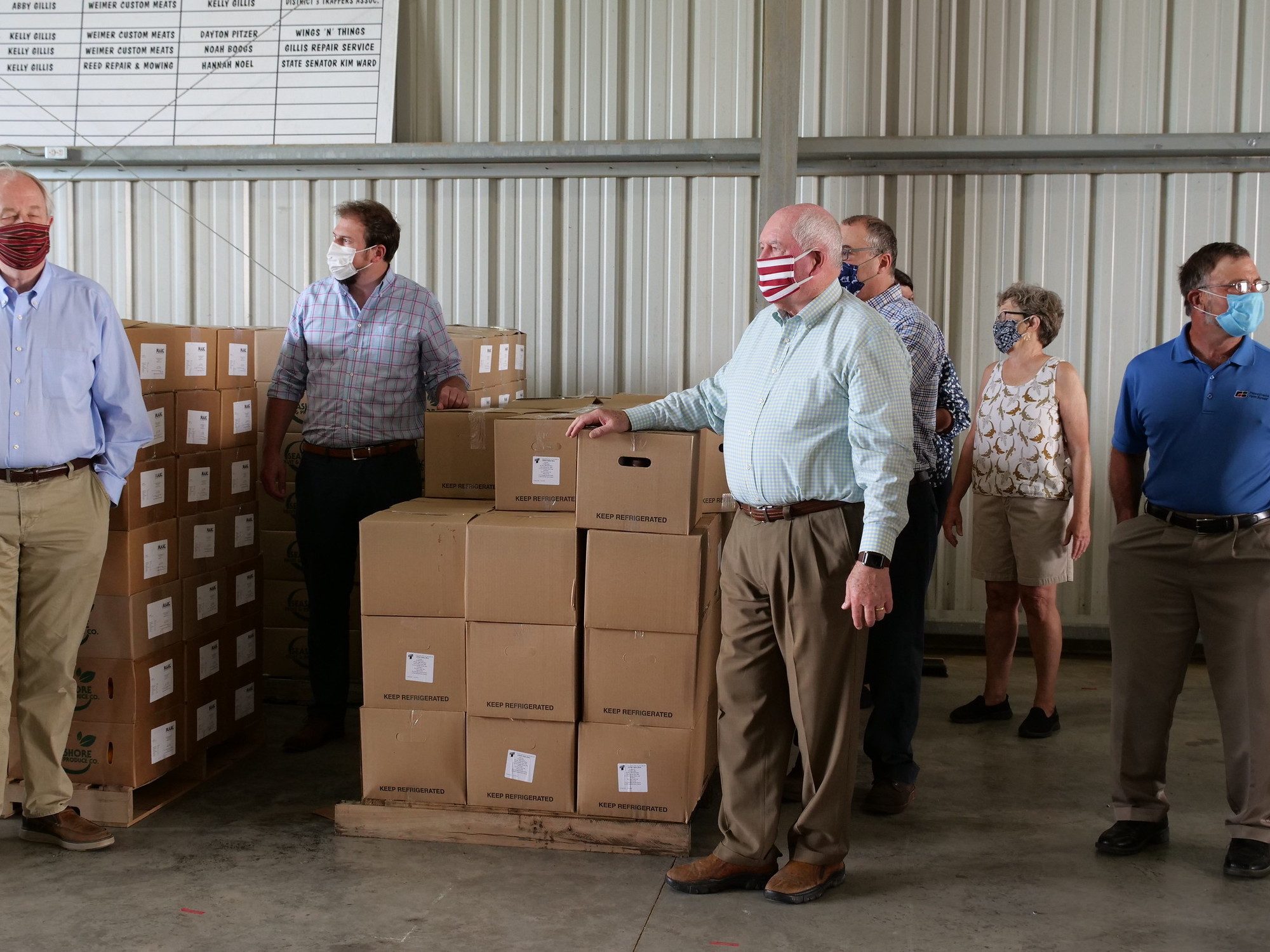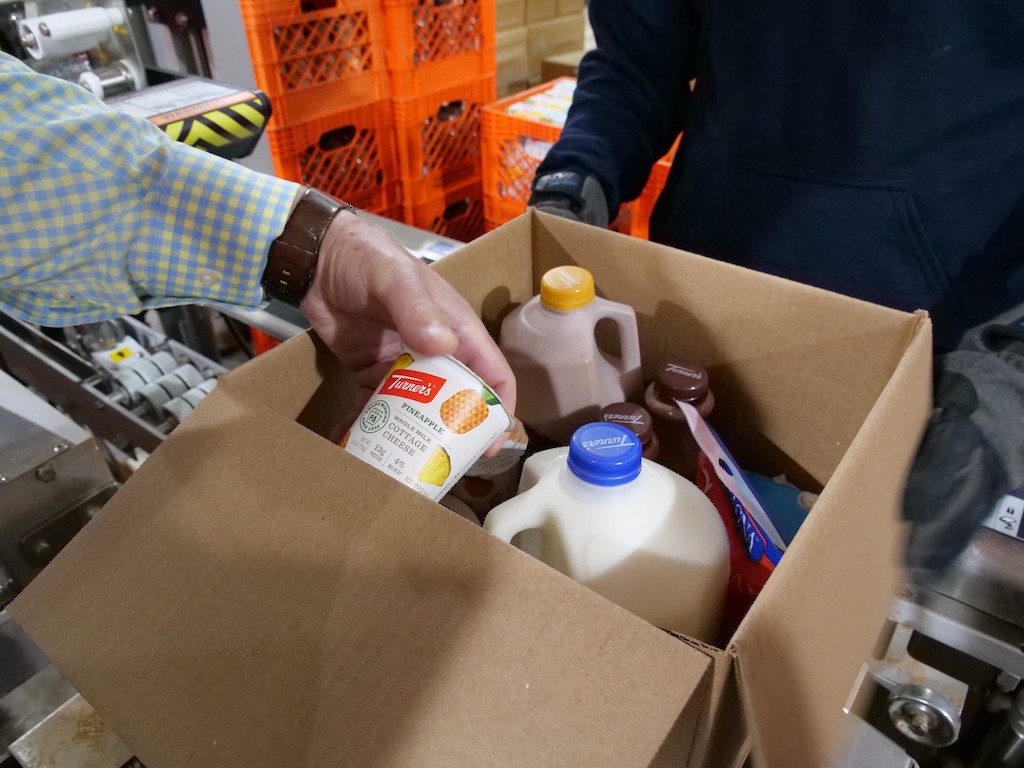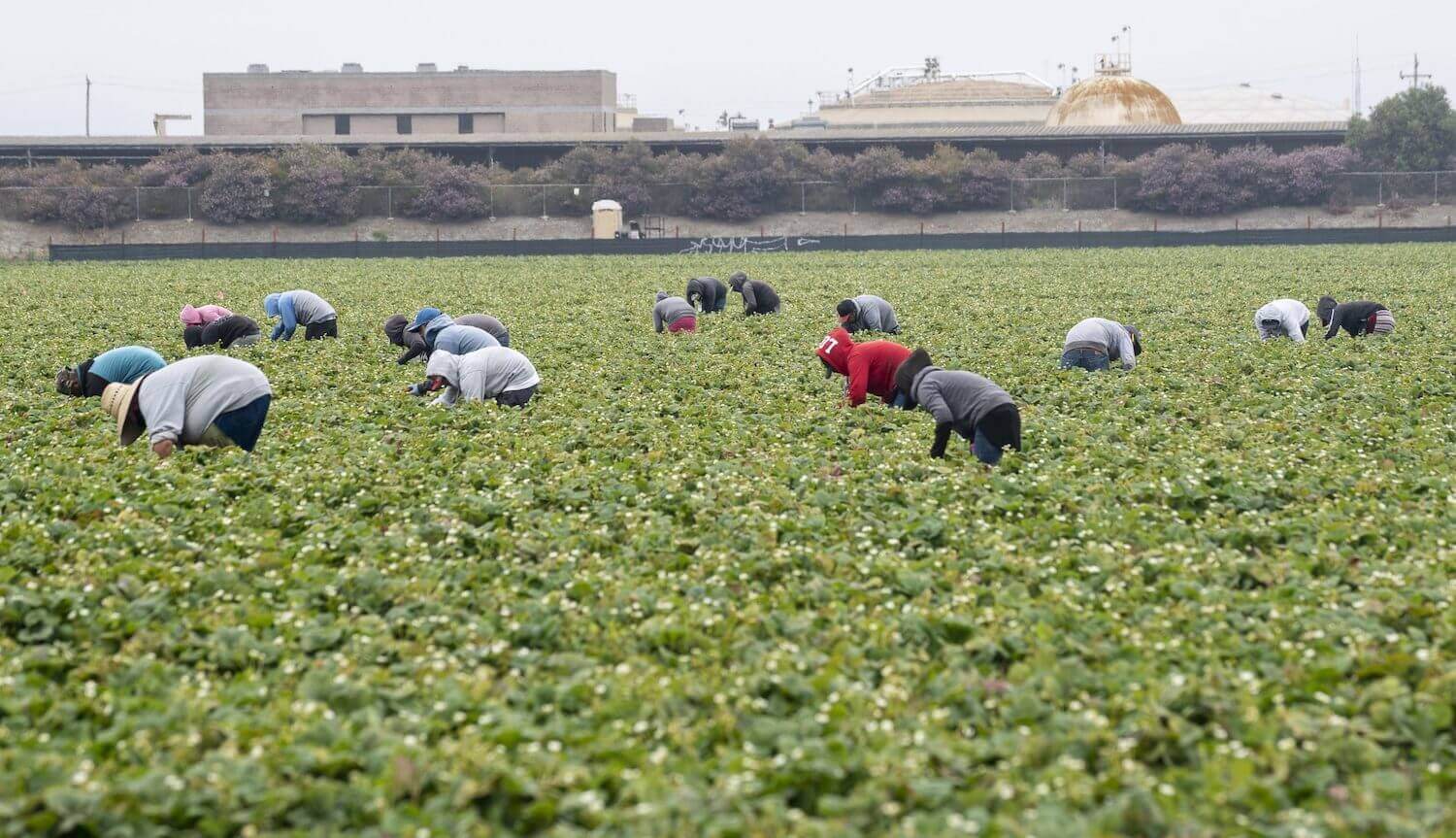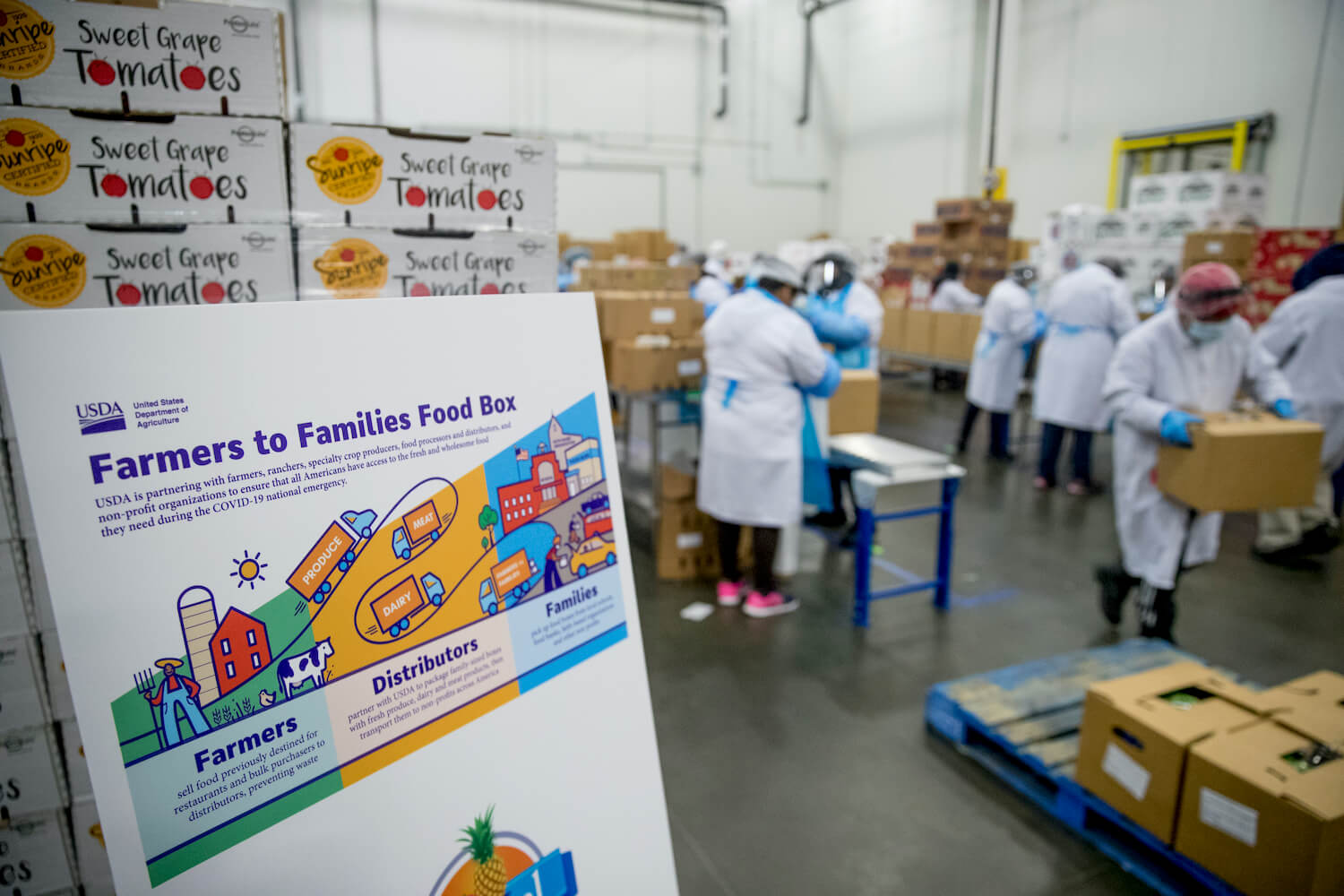
AP Photo / Andrew Harnik
USDA’s food boxes have faced scrutiny for inefficiencies, widely variable distributor payments, and general confusion. New mapping reveals even more issues.
When the Department of Agriculture (USDA) launched its Farmers to Families Food Box program in mid-May, leaders at Feeding Southwest Virginia, the main food bank for 26 rural counties, were thrilled. They had seen demand rise 20 percent due to Covid-19, and the government-funded boxes of dairy, meat, and produce would go a long way to help their clients. But they soon hit a snag: They couldn’t find a single distributor that would deliver boxes to their region. “We knew immediately there was an issue,” said Lisa Uhl, director of marketing and communications. Companies had bid for the lucrative food box contracts by specifying which geographic areas they were willing to serve, and USDA had apparently left some major distribution gaps when it selected the winners. Only by complaining to elected officials and the Secretary of Agriculture did the food bank manage to participate in the program during its second round of shipments.
Public records obtained by The Counter, detailing food box deliveries by region reveal that while food banks like Feeding Southwest Virginia struggled to get food boxes, the Farmers to Families Food Box program—the Trump administration’s flagship pandemic hunger relief effort—sent 21 counties more boxes than they had residents. But as food insecurity swelled across the country from mid-May to the end of June, food aid groups in many places—including the entire states of Alaska and Maine—struggled to find contractors to distribute an initial 36 million boxes. (In the months since, the program has distributed another 48 million boxes and contracted with new companies serving previously neglected regions, potentially filling some of these early gaps.)
The food box program has faced extensive scrutiny about how it allocated its nearly $3 billion worth of funding. Numerous contracts went to inexperienced or unlicensed distributors, and in many cases, companies received handsome payouts for mediocre food boxes. Now, new invoice details outlining distribution by zip code, city, county, and state, reveal that the initiative has also been highly inequitable in its distribution of food to hungry families struggling with the economic devastation from the coronavirus pandemic.
Despite patches of relative abundance, the map paints a picture of a camera-friendly program that was hastily erected overnight, a program where savvy food aid organizations who were in the right place at the right time had a better chance of securing boxes for their communities.
Perhaps realizing it had distribution gaps, USDA announced that for the next round of boxes, from mid-September through the end of October, it will prioritize distribution in “Opportunity Zones.”
Anti-hunger experts say a focus on Opportunity Zones misses the point. “There’s a much bigger issue here, which is that this is not really a very financially efficient or effective way of meeting rising need,” said Alison Cohen, senior director of programs at WhyHunger.
“There’s a much bigger issue here, which is that this is not really a very financially efficient or effective way of meeting rising need.”
In the months since the beginning of the pandemic, food insecurity has risen across the country. Census surveys found that more than 12 percent of adults lived in households without adequate food in late July, compared to less than 10 percent in early May, The Wall Street Journal reports. Meanwhile, food banks are expecting hunger to spike even further this fall, after lawmakers failed to renew a crucial, weekly $600 unemployment boost last month. Additional Covid relief funding has stalled in Congress, after Democrats and Republicans failed to agree on priorities: Dems are calling for a 15 percent boost to the Supplemental Nutrition Assistance Program (SNAP, formerly known as food stamps), which GOP lawmakers oppose.
[Subscribe to our 2x-weekly newsletter and never miss a story.]
That’s not to say the boxes haven’t found their way to families in counties receiving high volumes of boxes. In Missouri, Melvin Stepp, pastor and director of outreach ministries at Monark Southern Baptist Church—which has distributed thousands of food boxes—said he began calling distributors as soon as he received their names in May. Soon, his church was receiving seven or eight truckloads of boxes per day.
Stepp said the product was excellent, adding that one shipment contained the “nicest-looking peaches I’ve seen in a long time.” His church is in Newton County, Missouri, where food insecurity is projected to reach nearly 18 percent due to Covid-19. The county received roughly two boxes per resident in the first round of deliveries (though Monark ultimately handed them out across about 20 counties), and Stepp said Monark has been allowing clients to pick up one food box per week. Though the ministry sometimes receives more boxes than it can refrigerate, Stepp said he’s managed to pass out every box that comes in the door.
“Our farmers weren’t producing any food early June when the program first got up and running—that was when we really needed the produce.”
Ultimately, some argue that pre-packaged food boxes simply can not address the complex challenges that struggling families and overrun food banks are facing on the ground. During the program’s first round, USDA failed to award any contracts to distributors in Maine, forcing food banks to source what they could from outside the state, sometimes resulting in rotten or spoiled produce. Then, during the second round, USDA overcorrected for its oversight by purchasing more food boxes in Maine than some organizations had the capacity to deliver, resulting in wasted food, yet again.
“Our farmers weren’t producing any food early June when the program first got up and running—that was when we really needed the produce,” said Kristen Miale, president of the Good Shepherd Food Bank in Maine. “Now it’s coming in, but our farmers are producing in abundance. So we have so much produce that we’re actually a little challenged with getting it all out the door before it spoils.”
WhyHunger’s Cohen suggested that USDA could sidestep these incongruencies between supply and demand by simply giving money directly to food banks and pantries, rather than middlemen like distributors in the food supply chain. As an example of what that would look like, she pointed to a bill proposed by Democratic Senator Kirsten Gillibrand of New York in May that would have USDA provide block grants to food banks to buy fruits and vegetables directly from farmers within the same state. This could also appease producers, some of whom have complained that the program primarily benefits distributors, rather than the supposed “farmers” namechecked in the initiative’s title.
“While the food is obviously welcome and you’ll never find a food bank is going to say no to free produce, it has been incredibly challenging and has taken a lot of resources to get this food out.”
Alternatively, lawmakers could do a lot to mitigate hunger by simply increasing funding for nutrition programs that already exist, Cohen said, rather than engineering new ones. That could include making school lunch free for all children for the 2020-2021 school year or by increasing benefits for families on SNAP.
Miale agreed, adding that giving people money to buy food on their own doesn’t just provide dignity and choice—it also reduces pressure on overwhelmed food banks struggling to serve the hundreds of cars that now line up for assistance at distribution events.
“While the food is obviously welcome and you’ll never find a food bank is going to say no to free produce, it has been incredibly challenging and has taken a lot of resources to get this food out,” Miale said, referring to the Farmers to Families Food Box program. “It was not designed with how food access works in our country.”
We reached out to USDA for comment, and will update this post if the agency responds.


